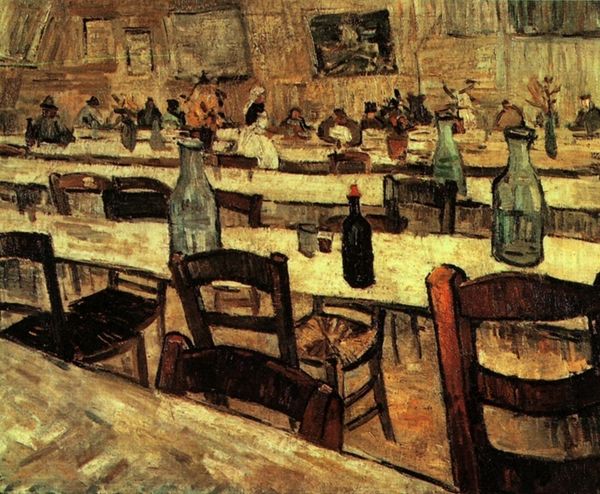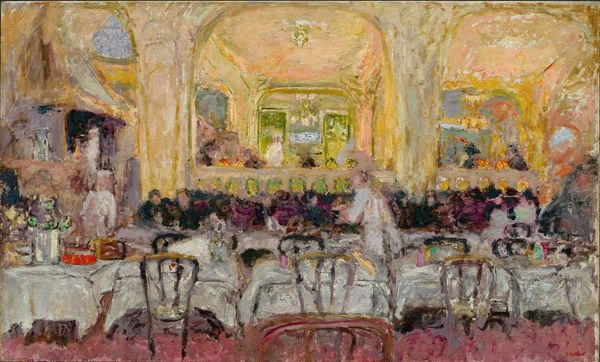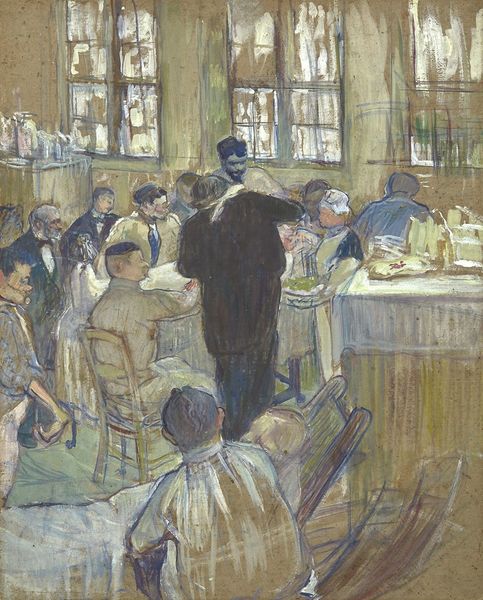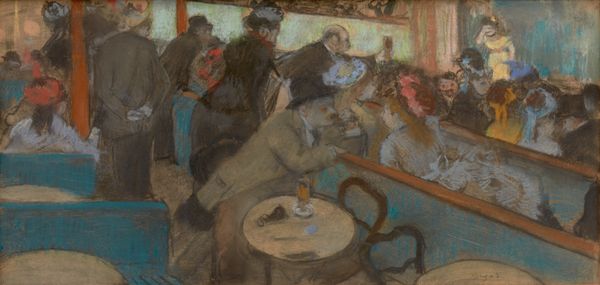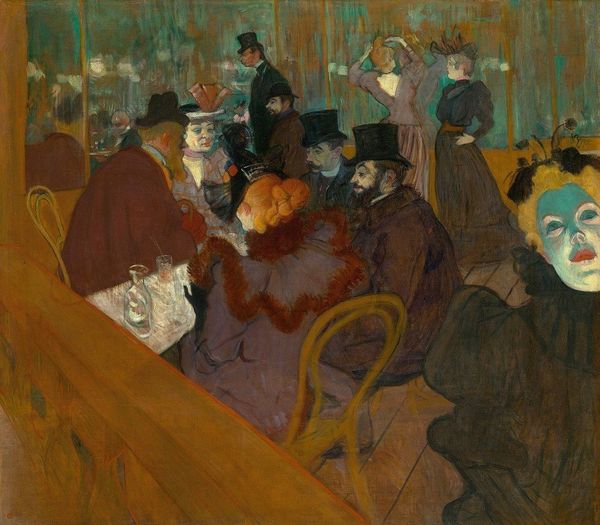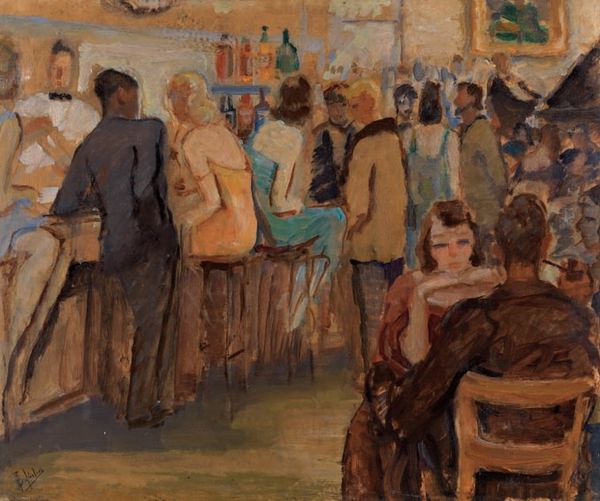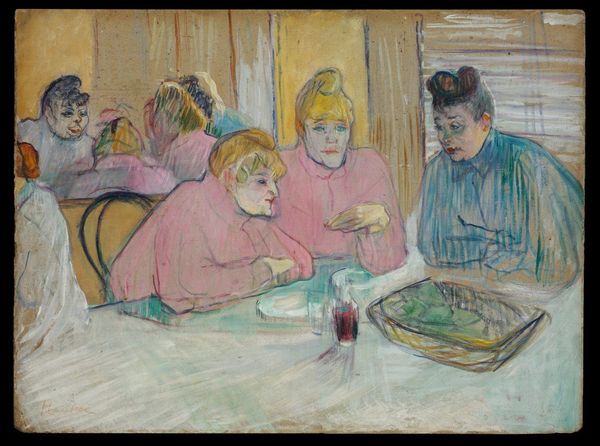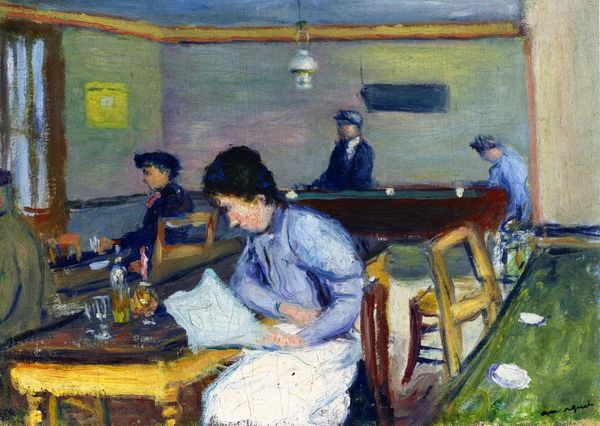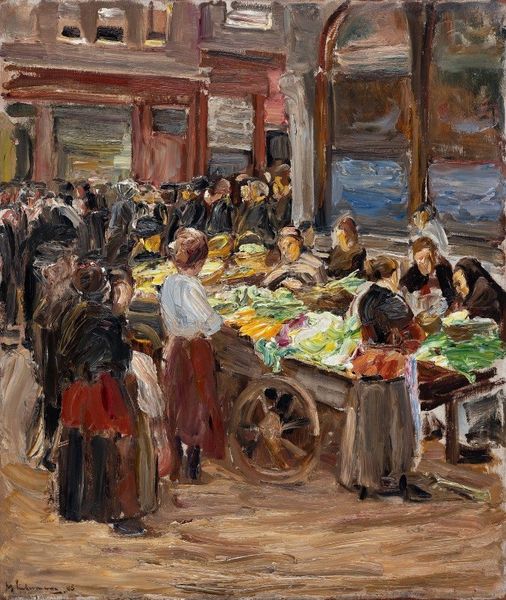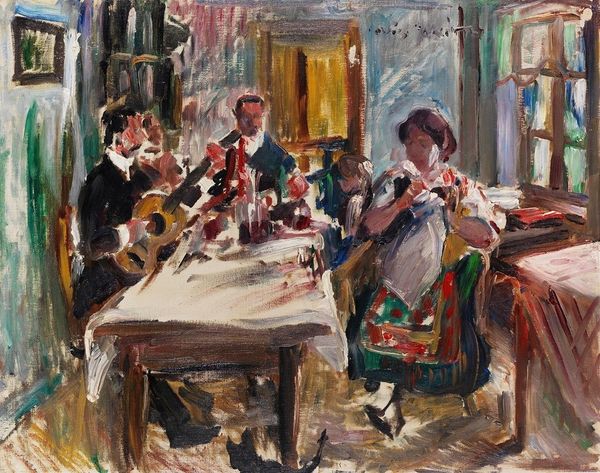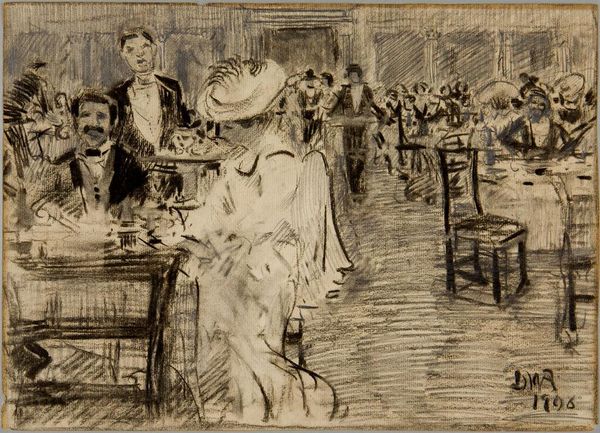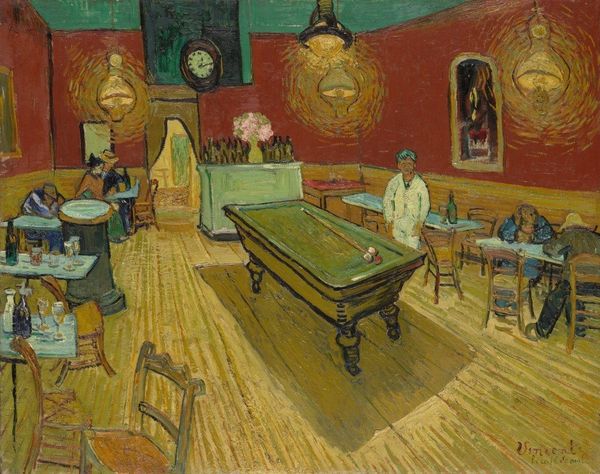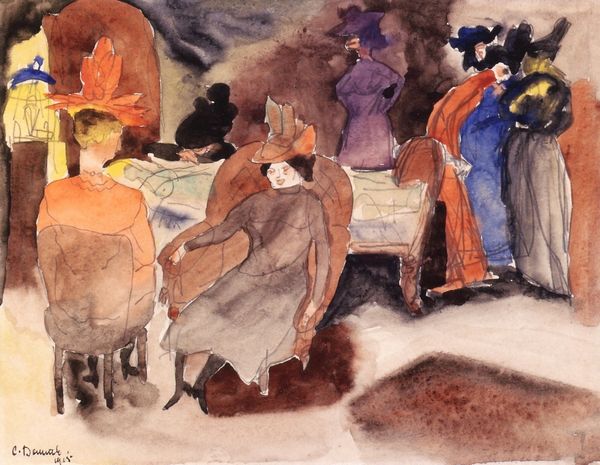
oil-paint, glass
#
impressionism
#
oil-paint
#
landscape
#
glass
#
genre-painting
Dimensions: 64.5 x 54 cm
Copyright: Public domain
Curator: What an evocative scene Van Gogh presents to us in "Interior of a Restaurant," created in 1887. The painting gives us a glimpse into a moment in time, a dining space filled with patrons and waitstaff. Editor: It's incredibly immediate, isn't it? There's something both intimate and alienating about it. The way he renders the room—the off-white palette, the slightly unsettling angle—creates a strangely voyeuristic experience. Curator: Indeed. Painted during his Parisian period, this piece reflects the influence of Impressionism, visible in the brushstrokes and the attention to light and color. However, the composition, particularly the linear perspective emphasized by the rows of tables, feels deliberate, constructed. Editor: Definitely not your typical, airy Impressionist party! Looking at the figures, there’s a sense of social hierarchy being depicted. You have these bourgeois types in their top hats occupying much of the midground, while a server with a white bonnet fades toward the background, perhaps illustrating the power dynamics inherent within these spaces. Curator: Absolutely. And while it appears to be a typical genre scene, consider that Van Gogh was quite interested in depicting working-class life, and in exploring spaces of leisure and consumption, revealing their socio-political implications. Editor: I agree, it really pulls me into considering who has access to this space, who feels welcome, and what sort of behaviors are considered proper or improper. Even the still-life arrangements on the tables - wine, water, plates of half-eaten food – feels staged somehow. Curator: Precisely. There's an almost theatrical quality, emphasized by how we, the viewers, are separated from the activity within. This piece exemplifies his complex interplay between observing reality and constructing his unique, expressive interpretation. It’s not just about representing what he saw, but using the scene as a way to delve into deeper, societal conditions. Editor: Well, I am now finding the slightly sour mood incredibly thought-provoking, if this gives so many narrative threads about class, labor, and spectatorship, then the painting accomplishes much more than I first realized. Curator: Yes, a complex canvas inviting critical investigation from varied points of view, offering much food for thought for us.
Comments
No comments
Be the first to comment and join the conversation on the ultimate creative platform.
